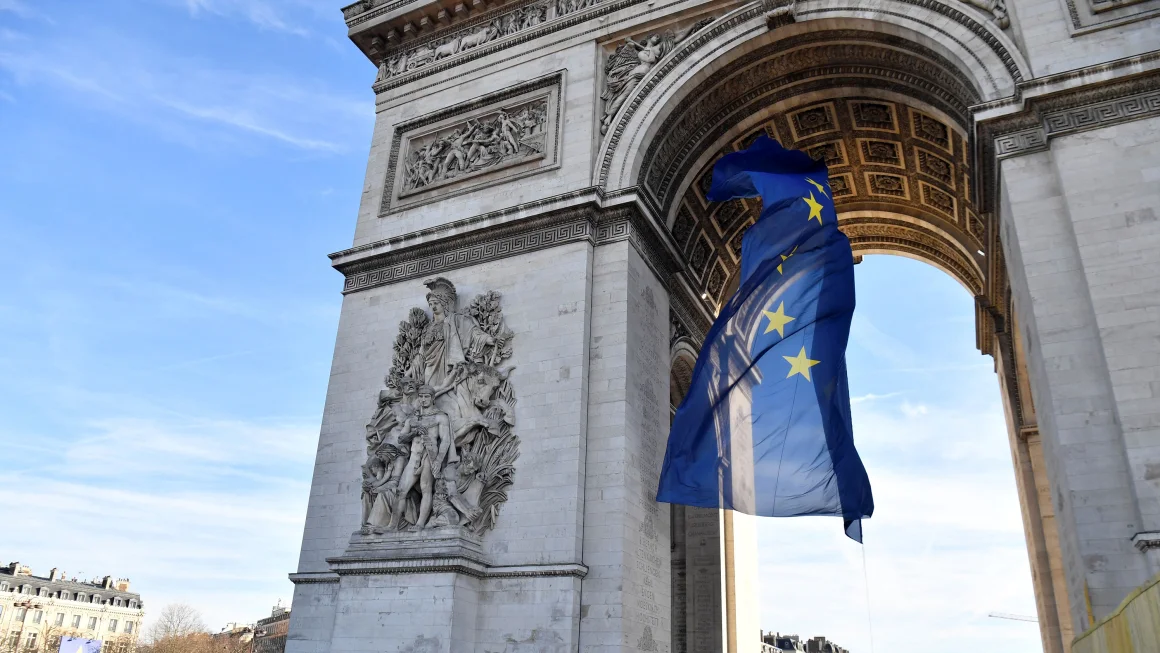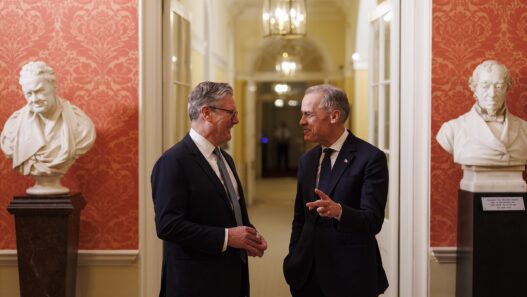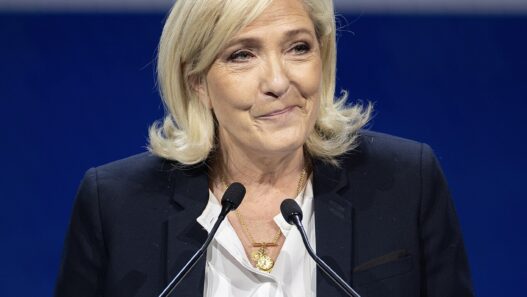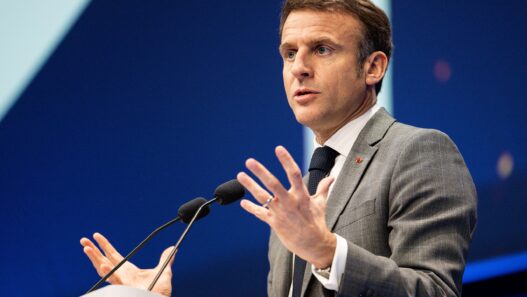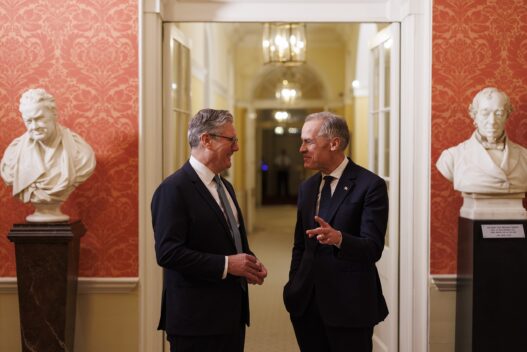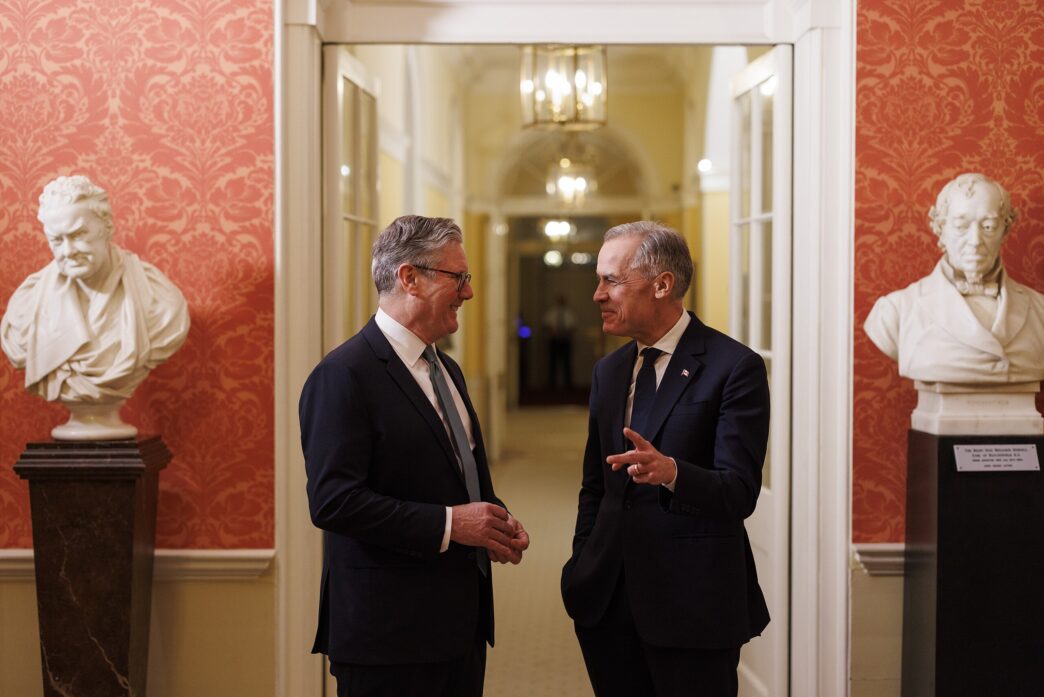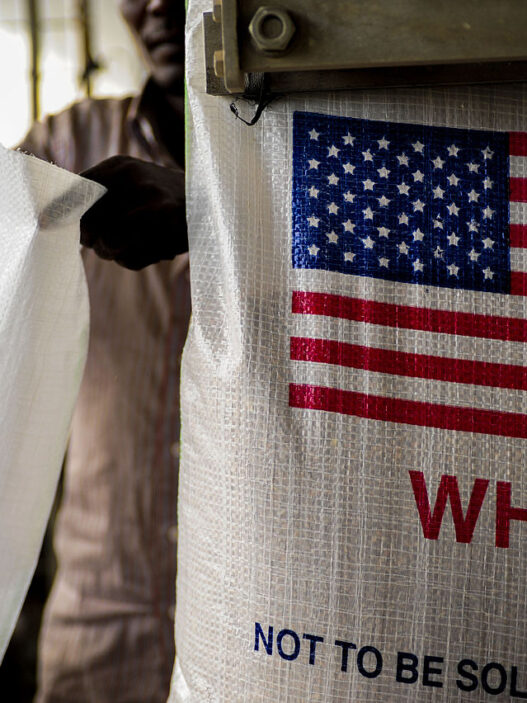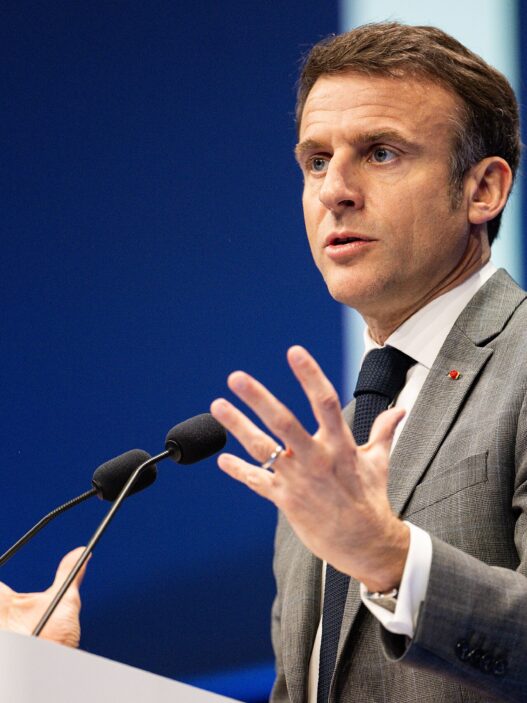Tariffs and talk of annexation from recently elected U.S. President Donald Trump have upended the seemingly inalterable bond that many Canadians thought they had with the United States. With Trump showing himself to be no fan of history or storied relationships, his willingness to throw established military and economic alliances into disarray has caused many U.S. allies to look elsewhere for stability and friendship.
Canada—one of America’s biggest trading partners alongside Mexico—has much to lose from Trump’s destructive policies, more than most other trading partners. Free trade and extensive economic and defense integration has created a transnational partnership that helps the three members of the USMCA (U.S.-Mexico-Canada Agreement, also known as “NAFTA 2.0”) to constitute one of the biggest slices of the global economy. Despite the economic benefits each member enjoys, Trump suggested that the U.S. was “subsidizing” Canada to the tune of $200 billion a year (a wildly inaccurate claim). Former Prime Minister Justin Trudeau suggested that Trump’s tariffs were intended to economically weaken Canada so that it would be easier to annex.
The swiftness with which Trump has been willing to destroy the economy of Canada—and a portion of America’s in the process—based on faulty data and hardline ideology has shocked the region. But the issue is not just economic. Together, Trump’s talk of tariffs and a “51st state” pose what is likely the most serious existential threat to Canada and Canadian identity since the Quebec sovereignty referendum of 1995.
So is Europe part of the solution to the giant American thorn in Canada’s side?
Despite the threat that Trump’s agenda poses for the world’s ninth-largest economy, Canada’s new Prime Minister, Mark Carney, did not set his sights south of the 49th parallel to try and bring down the temperature in Washington. Instead, Carney looked east—to Europe. Domestically, Trump’s reelection and Carney’s rapid and unlikely rise to the PM role has reversed the political fortunes of the once struggling Liberal Party of Canada, which was facing a certain and humiliating defeat at the hands of the Conservatives come next election.
With his new leadership role and a Canadian public angered by Trump’s insulting rhetoric and harmful economic policies, Carney has made quick work to differentiate himself from his unpopular Liberal predecessor, which included the strong symbolic gesture of choosing to travel to Europe as his first official visit as PM. Even though the visit involved no substantial policy positions, Carney was in Paris just three days after being sworn in to meet French President Emmanuel Macron. In an address to Macron and the press, Carney characterized Canada as the “most European of non-European countries.” Afterwards, Carney headed to the United Kingdom to meet Prime Minister Keir Starmer and King Charles III. The UK government’s tepid public response to Trump’s belittling of Canada had riled some Canadians back home who believed that Canada’s strong connection to Britain and membership in the Commonwealth of Nations deserved a stronger denunciation.
The former head of the Bank of England during Brexit, Carney has strong personal ties to Europe (he possesses both British and Irish citizenship, though he has said he will renounce them). Carney’s visit to Europe stirred discussion on both continents when he described Canada’s European-ness in comments that would have otherwise been boilerplate diplomatic rhetoric if not for Trump. In the current political climate, the comments had an obvious subtext and seemed designed to suggest that Canada’s relationship with the U.S. (and by extension Europe) had fundamentally shifted. In fact, even before he had set foot on European soil, Carney’s historic choice to head straight for Europe had signalled a substantial change in how Canada viewed itself globally, regardless of whether fuller integration with Europe would materialize. No Canadian Prime Minister had visited Europe in their first official visit prior to Carney.
Carney still stressed that the country’s relationship to the U.S. needed to remain positive—for all practical purposes, a full and swift breakaway from America is impossible, and Europe’s own relationship with Trump likewise had to be delicately negotiated. Nonetheless, the idea that Canada had perhaps a closer affinity with a region across the Atlantic than with its neighbour to the south reflects the impact that Trump’s second-term agenda has had on old alliances and national and regional identities. A patriotic wave in Canada materialized immediately with Trump’s talk of annexation, and the Liberal Party quickly positioned itself as a forceful counterweight compared to its Conservative rivals whose MAGA-like leader, Pierre Poilievre, has struggled to distance himself from Trump’s corrosive brand of politics. This renewed antagonism for all things American has resulted in the booing of the American national anthem at sporting events, the removal of American flags on Canadian soil, the consumer boycott of American goods, and reports of cancelled travel plans for south of the border.
Yet this re-energized Canadian patriotism has also been paired with reflection on the European-ness of the country’s healthcare system, social programs, and official policy of bilingualism. As the country enters a period of redefinition, the existential threat of annexation posed by Trump has led Canada to once again try and differentiate itself from the cultural juggernaut that is the U.S., whose overbearing presence in nearly every dimension of life in Canada has sometimes made it difficult to identify what is distinct about the country.
Canada’s supposed European-ness offers an offramp from the country’s dependency on the U.S. It suggests a European trajectory for cross-cultural exchange, all the more striking considering the country’s geographic distance from the continent, while also communicating a willingness to maintain a European character as a bulwark against American encroachment. In this sense, European-ness is floated as a positive development, and Carney’s message to Europe is that the union should take note of this affinity when considering its allies. Indeed, polling conducted in February showed a substantial plurality of Canadians in support of Canada joining the EU, despite the near insurmountable obstacles to such a proposal. This rather public embrace of Europe is not insubstantial: Canada has long resisted reconciling with its history of European settler colonialism that violently dispossessed Indigenous persons of their land. A mix of material and symbolic initiatives has arisen within the last two decades to try and address and acknowledge Canada’s cultural genocide of Indigenous communities.
With the threat of American neo-imperialism now squarely directed north, Canada’s Indigenous history and its historical relationships as a former European colony—long a thorny topic in debates on Canadian self-definition—have taken on an entirely different resonance as the country wonders how it will survive in the 21st century.
Europe, for its part—which has long faced a strong contingent of Euroskeptic politicians and member states—has welcomed its renewed appeal, even while quickly shutting down any notion that Canada could legally join the bloc. In March, former Riga mayor and current MEP Mārtiņš Staķis tweeted for Canada to “join the EU!” but the bloc’s treaties are quite explicit on the country’s non-eligibility. Neither public sentiment nor geography is the biggest obstacle. While Canada is a NATO member, and a definition for “Europe” is notoriously slippery and controversial, even Canada seems out of range for Europe’s ambiguous edges. While other non-European countries like Cyprus have successfully joined the EU and Turkey enjoys a bilateral customs union, Canada’s lack of historical and cultural contribution to the bloc has positioned it far from ever being considered a ‘European state’ in an official capacity, a necessary designation for it to join.
Moreover, Canada has also long been relegated to a lesser role when it comes to EU dealings with North America given the United States’ outsized economic and security role in Europe, which was made all the more apparent with Russia’s invasion of Ukraine. Among the G7 nations—which include the EU along with Germany, France, United Kingdom, and Italy—Canada is the smallest member in terms of both population and nominal GDP. Unsurprisingly, Canada’s preferences have not been a top priority for Europe.
Yet Canada and Europe now find themselves under similar pressures, and their kinship is more than just a strategic attempt to find friends in the absence of U.S. support. Russia’s invasion and war with Ukraine poses a security crisis for Europe that has led to similar existential wrangling to that of Canada. Shared defense concerns over the presence of a belligerent neighbour mean both Canada and Europe now find themselves facing a similar uncertain future where increased investment in defense and economic diversity are key elements to maintaining not just national or regional integrity but also relevance on a global stage that threatens to leave them behind. Both had long taken U.S. support and stability for granted, especially when Joe Biden’s election to the presidency seemed to set the global order back to normal.
Trump 2.0, however, has revealed the degree to which an integrated relationship with the U.S. can be swiftly turned into a painful dependency. Even if Europe is unwilling to massage its parameters to include Canada in its union, both can still benefit from each other’s common challenge when a trusted partner turns out to be anything but. Carney’s comments about Canada’s Europeanness, therefore, have a double meaning: on the one hand, they serve a strategic diplomatic function, but on the other, they convey to Europe that it is not alone in having to face a new era where geopolitical circumstances necessitate a rethinking of one’s sovereign identity.

